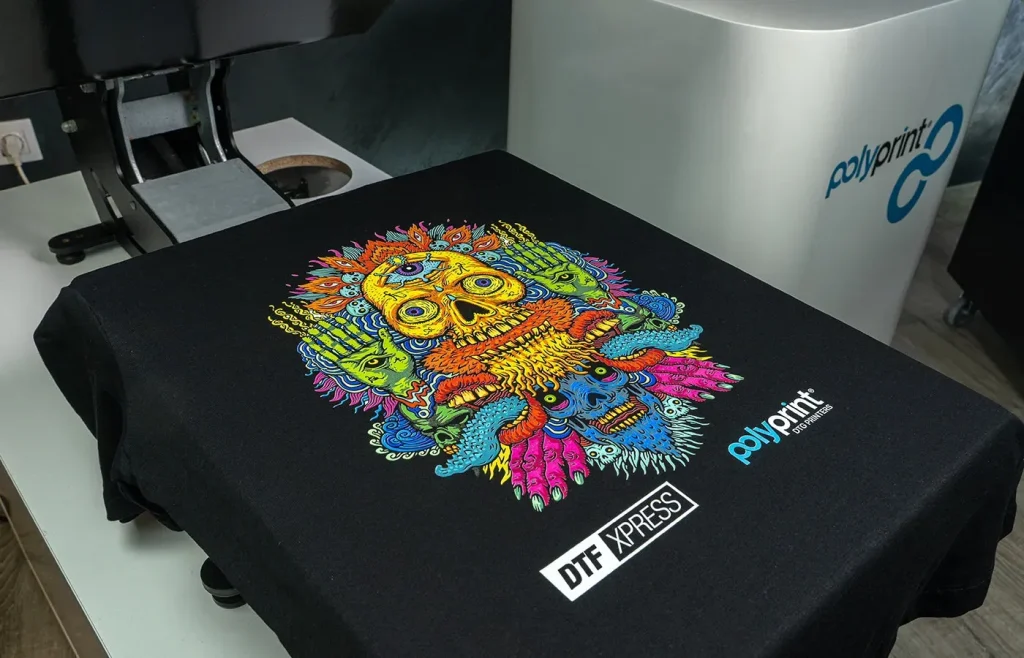DTF printing, or Direct to Film printing, is rapidly transforming the landscape of fashion design, providing designers with innovative tools to elevate their creative expressions. This advanced printing technology allows detailed and vibrant images to be transferred seamlessly onto various textiles, marking a significant departure from traditional methods like screen printing. As the fashion industry leans into personalization and unique garment creation, DTF printing stands as a game-changer, enabling designers to bring their imaginative ideas to life with remarkable quality. Additionally, the benefits of DTF printing extend to sustainable fashion printing practices, highlighting its eco-friendly potential in minimizing waste. In this exploration, we will delve into the world of DTF printing technology and its implications for custom apparel and the broader fashion industry.
Direct to Film printing, commonly known as DTF printing, represents a revolutionary approach within the realm of textile printing and fashion design. This technique leverages advanced printing technology to achieve stunning, high-resolution graphics on a variety of fabrics, making it an appealing choice for contemporary designers. By facilitating creative expression and catering to the increasing demand for personalized apparel, this method enriches fashion design printing capabilities while advocating for sustainable fashion practices. With its ability to produce intricate designs and its reduced environmental footprint, DTF technology has positioned itself as a leader in the evolution of custom apparel solutions. As we explore the benefits that Direct to Film printing offers, it becomes evident that its impact on the fashion industry is profound and far-reaching.
Exploring DTF Printing Technology for Fashion Designers
DTF printing technology is rapidly gaining traction among fashion designers due to its innovative approach to textile printing. By leveraging advanced digital printing techniques, DTF printing allows for the transfer of intricate designs onto various fabrics with remarkable precision. This technology not only enhances the aesthetic appeal of apparel but also offers designers the opportunity to experiment with color gradients and complex patterns that traditional printing methods struggle to produce.
Additionally, DTF printing provides a highly efficient workflow that caters to the fast-paced nature of the fashion industry. With the rise of on-demand fashion, designers can produce limited runs of customized designs without sacrificing quality or incurring significant overhead costs. The shift towards DTF printing reflects a broader trend in the industry towards embracing technological advancements for enhanced creativity and output.
Frequently Asked Questions
What are the key benefits of DTF printing in fashion design?
DTF printing technology offers several key benefits for fashion design, including high-resolution detail, versatility across different fabrics, reduced production times, and sustainability benefits. This innovative method allows designers to create intricate designs with vibrant colors, work with a variety of textiles, speed up production processes, and reduce waste compared to traditional printing methods.
How does DTF printing compare to traditional printing methods?
Unlike traditional printing methods such as screen printing and direct-to-garment (DTG) printing, DTF printing uses specialized films to transfer designs onto fabrics. This process enables higher detail, more color variety, and adaptability to various materials, while also reducing production times and minimizing waste.
Is DTF printing suitable for sustainable fashion printing?
Yes, DTF printing aligns well with sustainable fashion printing initiatives. The process generates less waste, eliminates the need for screens, and often uses eco-friendly inks. This makes it a great choice for designers focusing on sustainability while meeting the growing consumer demand for ethical production practices.
What makes DTF printing ideal for custom apparel?
DTF printing is particularly suited for custom apparel due to its ability to produce high-quality, detailed designs quickly and efficiently. This technology allows designers to create unique, personalized fashion pieces that resonate with modern consumers’ desire for individuality and creative expression.
What recent developments are occurring in DTF printing technology?
Recent advancements in DTF printing technology include improved printers and inks that allow for faster processing times and higher resolution outputs. These innovations make DTF printing more accessible for both small startups and large fashion brands, empowering designers to further explore their artistic possibilities.
How is DTF printing influencing the future of fashion design?
DTF printing is poised to shape the future of fashion design by enabling designers to create personalized, high-quality, and sustainable apparel. As the market for custom clothing expands and consumer trends evolve, DTF printing technology will play a significant role in differentiating brands and driving growth in the fashion industry.
| Key Points | Details |
|---|---|
| Introduction to DTF Printing | DTF printing uses a specialized film to transfer high-quality designs onto textiles, providing a creative edge to fashion designers. |
| Understanding the DTF Printing Process | Involves printing designs onto transfer film, applying adhesive powder, and using heat to transfer the design onto fabrics. |
| Key Advantages of DTF Printing | Offers high detail, versatility across various fabrics, reduced production times, and sustainability. |
| Recent Developments in DTF Printing | Growing popularity in custom apparel, technological advancements in printing, and a focus on sustainability. |
| Future Market Growth | Predicted market growth of over 25% driven by demand for customization and collaboration among brands. |
Summary
DTF printing is redefining the landscape of fashion design, offering an innovative method for creating stunning, customized apparel. Its unique ability to deliver high-resolution prints on a variety of fabrics, combined with sustainable practices and faster production times, positions it as a vital tool for designers today. As the industry shifts towards personalization and eco-responsibility, DTF printing is not only responding to current trends but actively shaping future ones. By harnessing this technology, fashion professionals can unlock new levels of creativity, producing items that resonate with modern consumers while maintaining a commitment to quality and sustainability.



